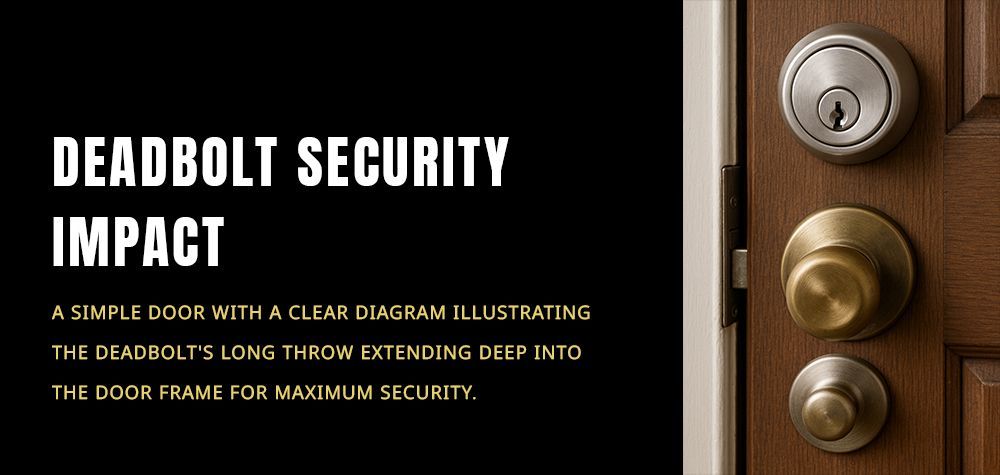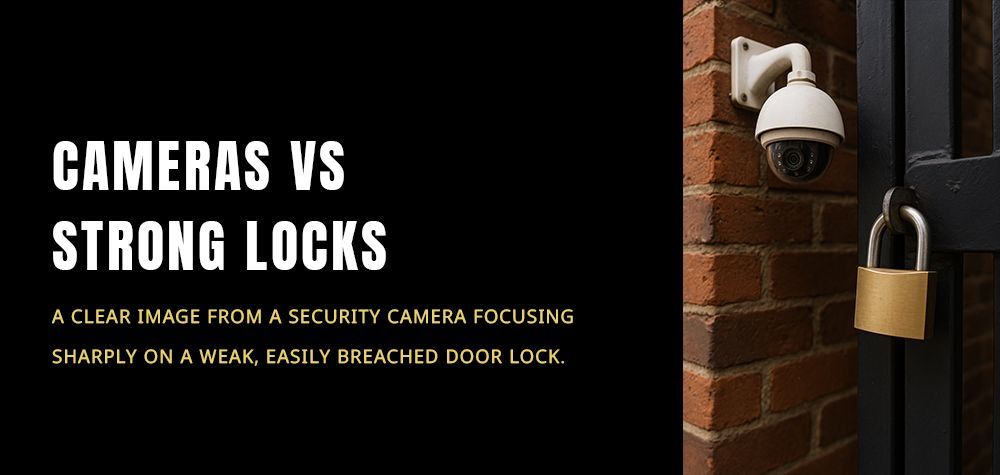Antique Lock Repair & Restoration Guide
Antique locks are more than just functional hardware; they are pieces of history that add character and charm to your home. Whether it's a Victorian padlock, an old church lock, or a vintage safe lock, these unique pieces require special care and expertise to restore. If you have an antique lock that's broken or needs a bit of TLC, don't worry—repairing and restoring these treasures can bring them back to their former glory, preserving their beauty and functionality for years to come.
Read more about Best Door Lock Lubricants!
Types of Antique Locks That Can Be Restored
- Church locks
- Heritage property locks (e.g., listed buildings)
- Padlocks
- Old door locks
- Old cabinet locks
- Victorian locks
- Old furniture desk and drawer locks
- Old safe locks
Finding an Antique Lock Expert
Finding an antique lock expert is essential to ensure that your valuable vintage locks are restored with care and precision. One reliable option is contacting Brothers Locksmith, renowned for their expertise in antique lock repair services. Our skilled locksmiths understand the intricacies of handmade, historic locks and are equipped to handle a range of issues, from mechanical problems to cosmetic restorations. Trusting your antique locks to Brothers Locksmith means they will be repaired with the utmost respect for our historical significance and functional integrity.

Common Antique Lock Repair Issues
Antique locks, while beautiful and historically significant, often require specialized attention due to their age and unique construction. Here are some common issues that antique locks face and how they can be addressed:
Mechanical Problems: Over time, the internal mechanisms of antique locks can wear out or break. Skilled locksmiths can disassemble the lock, identify the faulty components, and repair or replace them to restore functionality.
Jammed Locks: Antique locks can become jammed due to dirt, rust, or misalignment of internal parts. Careful cleaning and lubrication, combined with realigning the components, can often resolve these issues.
Cosmetic Restoration: The appearance of antique locks can degrade over time, with rust and tarnish being common problems. Expert locksmiths can clean and polish these locks, sometimes applying protective coatings to prevent future corrosion.
Cracks or Breaks: Structural damage, such as cracks or breaks in the lock body, requires precision repair. Locksmiths may use techniques like welding or brazing, and in some cases, they might need to fabricate new parts to replace damaged ones.
Replacement Parts: Since antique locks are often handmade, finding replacement parts can be challenging. Skilled locksmiths can create custom parts using machinery like lathes and traditional hand tools, ensuring the lock remains as authentic as possible.
Antique Safe Locks: For old safes, locksmiths can create new keys, replace worn-out locks, or repair the existing locking mechanisms. They can also safely open locked safes and provide solutions tailored to the specific needs of antique safe restoration.
Step-by-Step Guide to Antique Lock Repair
Repairing antique locks requires patience, precision, and an understanding of both the mechanical components and historical context of the lock. Here’s a detailed step-by-step guide to effectively repair an antique lock:
1. Assessment and Inspection:
- Examine the Lock: Carefully inspect the antique lock for visible damage, rust, or missing parts.
- Functional Testing: Test the lock to identify mechanical issues such as jamming, stiffness, or misalignment.
2. Disassembly:
- Gather Tools: Prepare your tools including precision screwdrivers, pliers, tweezers, and a small hammer.
- Remove External Components: Begin by unscrewing and removing any visible screws or bolts securing the lock.
- Internal Disassembly: Carefully dismantle the lock mechanism, taking note of the order and orientation of each part.
3. Cleaning and Rust Removal:
- Use Rust Remover: Apply a rust remover solution to corroded parts, using a soft brush or wire brush to gently scrub away rust.
- Cleaning: Clean each component thoroughly with a solvent to remove dirt, old lubricants, and debris.
4. Fabrication of Replacement Parts:
- Assess Needed Parts: Identify any broken or missing components that need replacement.
- Use Machinery: Utilize a lathe or milling machine to fabricate new parts based on measurements and specifications of the original components.
- Handcrafting: For intricate parts, use files and rasps to shape and refine the replacements.
5. Repair and Reassembly:
- Replace Springs and Pins: Install new springs and pins as necessary, ensuring they fit snugly into their designated slots.
- Align Components: Carefully align all parts according to the lock’s mechanism diagram or reference photos.
- Secure Fasteners: Reattach screws or bolts securely, ensuring no components are loose or misaligned.
6. Lubrication:
- Apply Lubricant: Use a high-quality lubricant suitable for antique locks to ensure smooth operation of moving parts.
- Avoid Excess: Apply lubricant sparingly to prevent buildup and attract dust.
7. Cosmetic Restoration:
- Polish Exterior: Polish the lock’s exterior using a polishing compound to restore its original luster.
- Protective Coating: Apply a thin layer of protective coating to prevent future corrosion and maintain appearance.
8. Testing and Adjustment:
- Operational Test: Test the repaired lock multiple times to ensure all parts function smoothly and the lock operates correctly.
- Adjustment: Make minor adjustments if necessary to improve functionality or alignment.
9. Final Inspection and Completion:
- Visual Inspection: Inspect the entire lock assembly for any overlooked issues or imperfections.
- Documentation: Document the repair process, including any custom parts fabricated and adjustments made.
- Secure Reassembly: Ensure all parts are securely fastened and the lock operates as intended.
10. Preservation and Maintenance Advice:
- Storage: Store the antique lock in a dry and secure location to prevent further deterioration.
- Regular Maintenance: Advise the owner on periodic lubrication and inspection to prolong the lock’s lifespan.
Conclusion
In conclusion, repairing antique locks requires a blend of craftsmanship, patience, and technical expertise. By carefully assessing, disassembling, cleaning, and meticulously reassembling the lock, you can restore its functionality and aesthetic appeal. Regular maintenance and proper storage will ensure the lock remains in optimal condition for future generations to appreciate.
Call Us Any Time!






